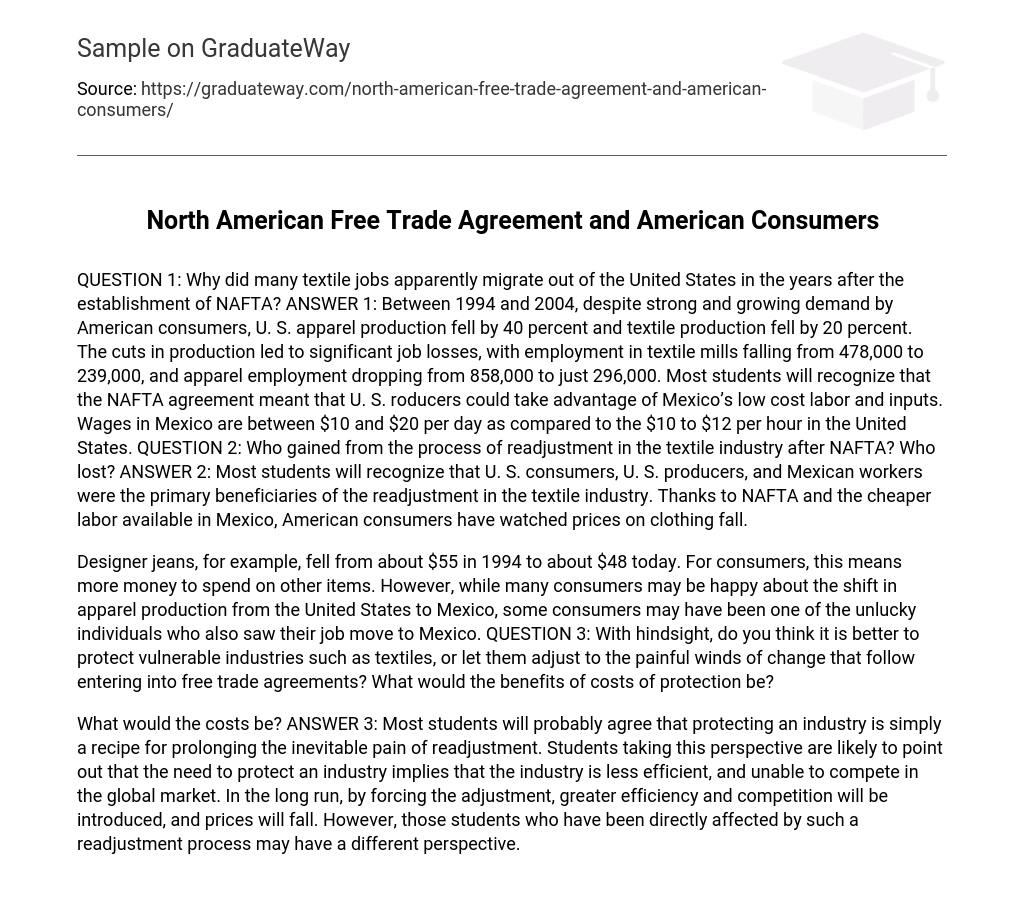QUESTION 1: What caused the migration of textile jobs out of the United States after NAFTA was established?
ANSWER 1: The establishment of NAFTA led to a significant decrease in textile and apparel production in the United States between 1994 and 2004. Textile production declined by 20% and apparel production decreased by 40%. As a result, there was a substantial loss of employment, with textile mills losing 239,000 jobs and apparel employment declining from 858,000 to 296,000. This shift occurred because American producers took advantage of Mexico’s inexpensive labor and resources made possible by the NAFTA agreement. In Mexico, wages ranged between $10 and $20 per day compared to $10 to $12 per hour in the United States.
QUESTION 2: Who were the winners and losers in the readjustment process within the textile industry following NAFTA?
ANSWER 2: U.S. consumers, U.S. producers, and Mexican workers were the primary beneficiaries of this readjustment within the textile industry following NAFTA. Due to cheaper labor in Mexico resulting from NAFTA, American consumers could enjoy lower clothing prices.
Designer jeans have become more affordable over the years, with prices decreasing from $55 in 1994 to approximately $48 currently. This drop in price enables consumers to allocate their funds towards additional purchases. Nevertheless, while some individuals are content with apparel production transitioning from the United States to Mexico, others have unfortunately experienced job losses as a result of this change. Reflecting on the situation, do you believe it is preferable to safeguard susceptible industries such as textiles or allow them to confront challenges associated with free trade agreements? What advantages and disadvantages arise from implementing protective measures?
What are the costs? ANSWER 3: Certain students may contend that safeguarding an industry merely postpones the expected challenges of adjustment. These students assert that protecting an industry implies its ineffectiveness and inability to rival in the worldwide market. Ultimately, by enforcing adaptation, enhanced efficiency and competition will be introduced, leading to reduced prices. Nevertheless, students who have observed the repercussions of such adaptation may hold a contrasting viewpoint.





